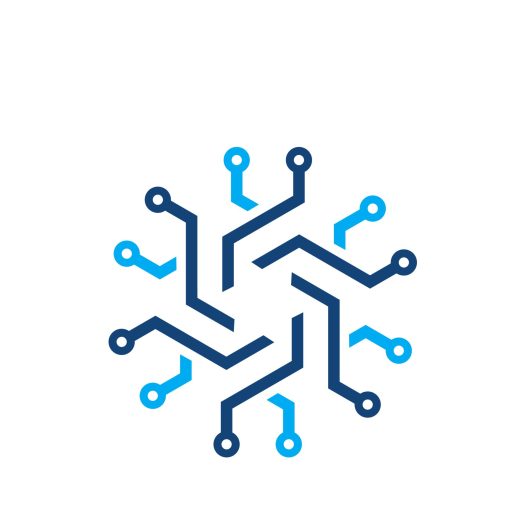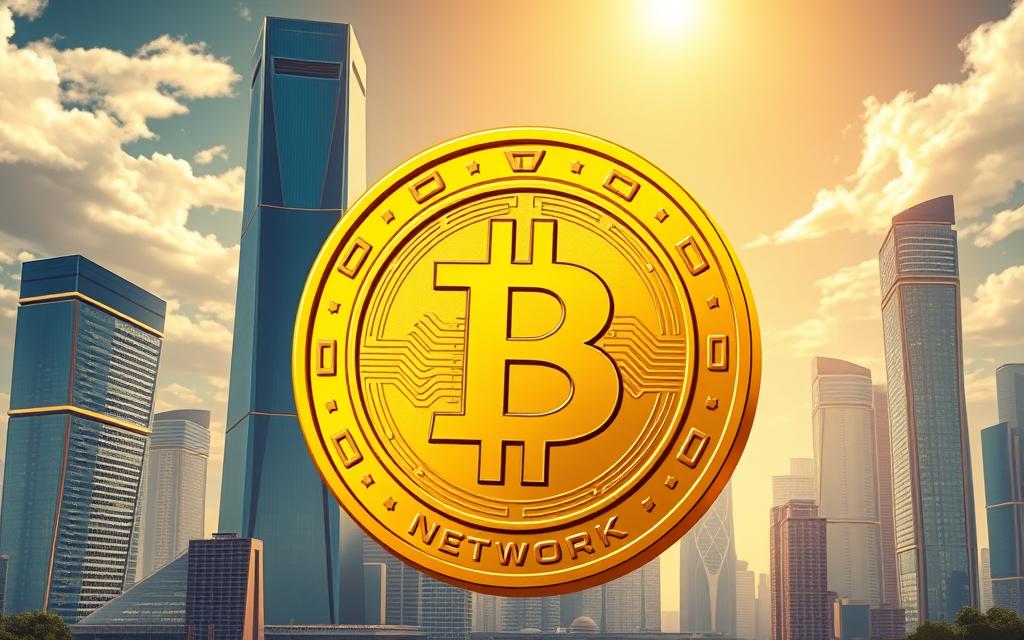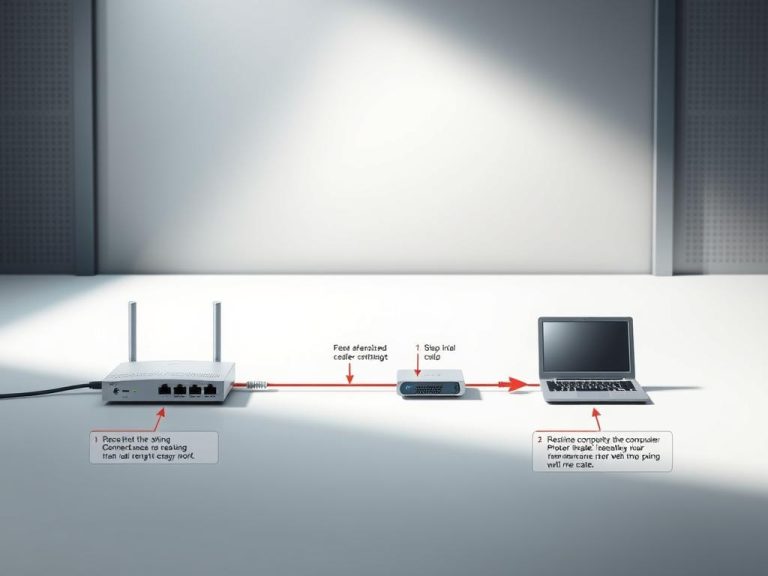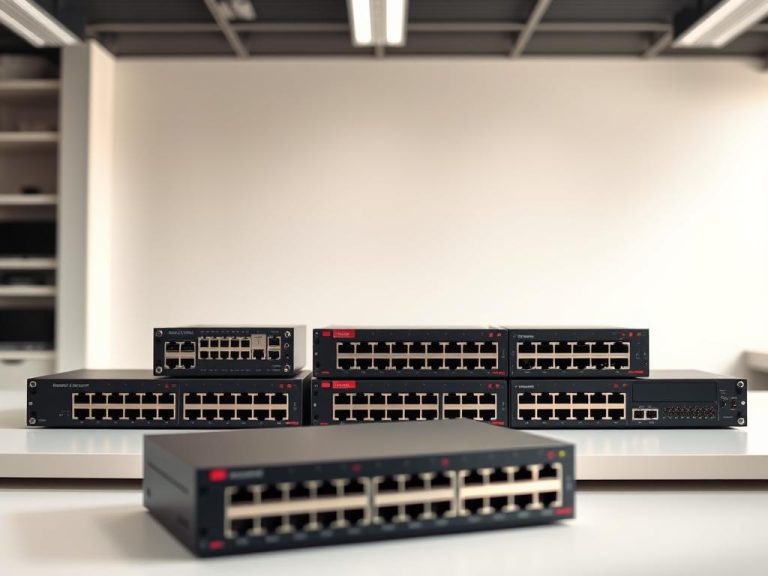Pi Network Review: Is Pi Network Legit or a Scam?
The cryptocurrency space has seen its fair share of controversies, but few projects have sparked as much debate as Pi Network. With over 60 million users, it claims to be a bold experiment in mobile-first crypto adoption. However, critics continue to raise questions about its legitimacy.
This article aims to provide a comprehensive review of Pi Network, examining its unique mobile-first mining approach and development since its 2019 launch. We’ll analyze the project’s crypto credentials, the founding team’s credentials, and the technical infrastructure to determine whether Pi Network is a genuine cryptocurrency project or potentially a scam.
By exploring both supporting evidence and concerning red flags, we’ll provide readers with factual, unbiased information to make their own informed decisions about Pi Network’s credibility and potential value.
What is Pi Network?
The emergence of Pi Network marks a new era in mobile-based cryptocurrency mining. Pi Network is a Layer 1 blockchain designed specifically for mobile users, offering a lightweight and low-barrier mining model that operates entirely through smartphones. This approach eliminates the need for advanced hardware or significant energy consumption, making it accessible to a broader audience.
The Concept Behind Pi Network
Pi Network represents a novel approach to cryptocurrency that enables users to “mine” digital currency using only their smartphones. The project was designed to make cryptocurrency accessible to everyday users who may be excluded from traditional mining due to technical or financial barriers. By utilizing a mobile app, Pi Network creates a more inclusive cryptocurrency ecosystem where value is distributed based on contribution rather than computing power or capital investment.
For more information on Pi Network, you can visit Forbes, which provides an in-depth analysis of the project.
Pi Coin and Its Purpose
At the center of the Pi Network ecosystem is Pi Coin (PI), the network’s native currency. Users earn Pi Coins by contributing to the network’s growth, security, and app usage. Pi Coin serves as the native currency of the network, intended to facilitate transactions within the Pi ecosystem and potentially hold external value once fully launched.
Mobile-First Mining Approach
The mobile-first mining approach of Pi Network represents a significant departure from traditional cryptocurrency mining models. By using a consensus mechanism that doesn’t require constant device operation or high energy consumption, Pi Network makes mining accessible to a wider audience. This approach aligns with the project’s goal of supporting a decentralized economy powered by everyday users, not professional miners or early adopters.
The Founders and Development Team
A team of Stanford University alumni launched Pi Network with a bold vision. On March 14, 2019, Pi Day, Dr. Nicolas Kokkalis, Dr. Chengdiao Fan, and Vincent McPhillip introduced a cryptocurrency project that aimed to make mining accessible on smartphones without draining battery life or requiring specialized hardware.
Stanford Origins: Dr. Nicolas Kokkalis and Dr. Chengdiao Fan
The founders of Pi Network have a strong academic background. Dr. Nicolas Kokkalis, with a Ph.D. in Computer Science from Stanford, has expertise in distributed systems and was the first to teach Stanford’s class on decentralized applications (dApps). His knowledge in this area has been instrumental in shaping Pi Network’s technical framework. Dr. Chengdiao Fan, holding a Ph.D. in Anthropological Sciences, brings insights into social computing and human behavior, which informs Pi Network’s community-centric approach.
Key Team Members and Their Expertise
| Founder | Background | Expertise |
|---|---|---|
| Dr. Nicolas Kokkalis | Ph.D. in Computer Science, Stanford | Distributed Systems, Decentralized Applications |
| Dr. Chengdiao Fan | Ph.D. in Anthropological Sciences | Social Computing, Human Behavior |
| Vincent McPhillip | Business Development Experience | Cryptocurrency Project Management |
Team’s Vision and Expertise
The team’s vision is centered around democratizing cryptocurrency, making it accessible to everyday users through their mobile devices. By combining technical innovation with social science principles, Pi Network aims to create a cryptocurrency ecosystem that emphasizes community building and user engagement. The value proposition of Pi Network lies in its user-friendly approach to cryptocurrency mining, a feature that sets it apart from other projects in the space.

The founding team’s diverse expertise and their academic credentials have lent credibility to the Pi Network project. However, the reliance on academic backgrounds has also raised questions about the project’s long-term value and its ability to deliver on its promises.
How Pi Network Works
At its core, Pi Network utilizes the Stellar Consensus Protocol to facilitate a trust-based mining process. This approach diverges significantly from the energy-intensive Proof-of-Work systems used by many other cryptocurrencies.
The Stellar Consensus Protocol
The Stellar Consensus Protocol (SCP) is a consensus mechanism based on the Federated Byzantine Agreement (FBA). SCP operates through a system reliant on trust, allowing users to create ‘Security Circles’—small, trusted groups that participate in transaction validation and network security. This mechanism is fundamental to how Pi Network achieves consensus without the need for high computational power.
SCP’s trust-based approach enables a more energy-efficient and accessible mining process. By leveraging a network of trusted nodes, Pi Network maintains the security and integrity of its blockchain.
Security Circles and Trust Graph
The concept of Security Circles is central to Pi Network’s security mechanism. Users are encouraged to form these circles by selecting trusted contacts, which helps to validate transactions and secure the network. This trust-based system creates a “trust graph”—a network of verified relationships that prevents Sybil attacks and fake accounts while maintaining security without high computational requirements.
By designating trusted contacts within their Security Circles, users contribute to the overall security and trustworthiness of the Pi Network.
Mining Process and Rewards
The mining process on Pi Network is deliberately simplified for mass adoption. Users “mine” by opening the app daily and confirming their activity with a single tap, making it accessible to anyone with a smartphone. Pi’s mining rewards are calculated based on several factors, including how early a user joined, their Security Circle contributions, and their referral network.
| Factor | Description | Impact on Rewards |
|---|---|---|
| Early Adoption | Users who join early receive higher rewards. | Higher mining rate for early adopters. |
| Security Circle Contributions | Users who contribute to Security Circles receive bonuses. | Increased rewards for trusted users. |
| Referral Network | Users who refer others to Pi Network receive additional rewards. | Bonus for each successful referral. |
The system incorporates halving events at specific user milestones to create scarcity, similar to Bitcoin’s approach but triggered by user growth rather than time periods. As Pi Network evolves, the mining formula becomes more sophisticated, incorporating factors like node operation, app usage, and voluntary token lockups to reward various forms of network contribution.
Pi Network’s Evolution Timeline
Pi Network’s journey to becoming a prominent cryptocurrency has been marked by several distinct phases, each contributing to its growth and development. The project’s evolution is a testament to its dedicated team and community.
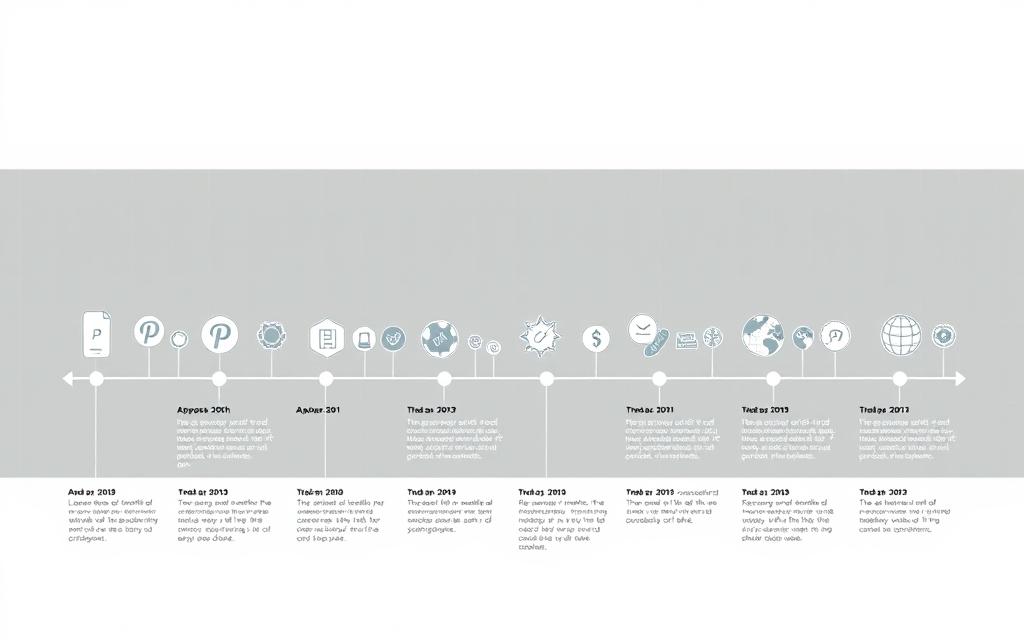
Beta Phase (2019-2020)
The Beta Phase, which commenced in March 2019, was the initial stage of Pi Network’s development. During this period, the Pi Network mobile application was launched, focusing on user acquisition through a referral mechanism and validating the smartphone-based mining concept. This phase laid the groundwork for the project’s future growth, attracting a significant number of users.
Testnet Phase (2020-2021)
In March 2020, Pi Network transitioned to the Testnet Phase, a critical period that tested the blockchain’s capabilities and scalability. Community members were encouraged to run network nodes, enhancing decentralization and contributing to the validation process. This phase was instrumental in refining the network‘s technical infrastructure.
Enclosed Mainnet (2021-2025)
December 2021 marked the beginning of the Enclosed Mainnet phase, where external network connectivity was restricted. This allowed the development team to focus on ecosystem development and user Know Your Customer (KYC) verification. The mainnet environment enabled internal transactions, further solidifying the project’s foundation.
Open Mainnet Launch (February 2025)
The Open Mainnet Launch on February 20, 2025, was a significant milestone for Pi Network. This event lifted the restrictions on external connections, enabling potential interactions with other blockchains and exchanges. The mainnet launch has positioned Pi Network for greater accessibility and integration within the broader cryptocurrency ecosystem.
In conclusion, Pi Network’s evolution through these four distinct phases has been a methodical and well-planned process. The project’s users have played a crucial role in its development, and the successful transition to the Open Mainnet marks a new chapter for Pi Network.
Pi Coin Market Performance
Since the Open Mainnet launch, Pi Coin’s market performance has been marked by volatility. The cryptocurrency has experienced significant price fluctuations, reflecting the speculative nature of new listings in the crypto market.

Price History Since Mainnet Launch
Pi Coin’s value dramatically increased after the Open Mainnet went live on February 20, 2025. Within six days, the token reached an all-time high of $2.99, largely due to initial investor enthusiasm and speculative market activity. However, this upward trend was short-lived, and by April 5, the price had retracted to approximately $0.41, representing an 86% decrease from its historical high.
Current Market Position
As of May 6, 2025, Pi Coin was trading at approximately $0.58, with a 24-hour trading volume of around $54.9 million. The coin‘s market capitalization stood at about $4.14 billion, placing it within the top 30 cryptocurrencies by market size. The current market position suggests that while Pi has achieved significant recognition and adoption, questions remain about its long-term value proposition and utility beyond its own ecosystem.
Pi Coin is now available on various exchanges, providing users with opportunities to buy, sell, and trade the coin. The mainnet launch has been a pivotal moment in Pi Network’s history, marking a significant step towards establishing Pi Coin as a viable cryptocurrency.
- Pi Coin’s market performance has been characterized by significant volatility since its Open Mainnet launch in February 2025.
- The coin experienced a dramatic price surge, reaching an all-time high of $2.99 within six days of the Open Mainnet launch.
- As of May 2025, Pi Coin has stabilized around $0.58, with a market capitalization of approximately $4.14 billion.
Is Pi Network Legit? Analyzing the Evidence
As the cryptocurrency landscape evolves, questions about Pi Network’s legitimacy have sparked intense discussion. The project’s credibility is being scrutinized by experts and users alike, raising important questions about its validity and potential.
Arguments Supporting Legitimacy
Several factors contribute to the argument that Pi Network is a legitimate project. Firstly, its academic foundation, with founders holding degrees from Stanford University, lends credibility to its technological and social computing aspects. The project’s substantial user base, with over 60 million registered users and millions of KYC-verified participants, suggests a level of adoption that is difficult to achieve for a purely fraudulent project.
Key milestones such as the launch of its Open Mainnet, Pi Browser, and wallet functionality demonstrate ongoing development and commitment to the project’s ecosystem. These achievements indicate that Pi Network is not merely a speculative venture but has tangible progress and a clear roadmap.
Red Flags and Concerns
Despite the positive aspects, several red flags surround Pi Network. A CNN report from 2025 revealed that the project’s mainnet nodes are centrally operated by the core team, contradicting claims of decentralization. This centralization raises concerns about data privacy due to the mandatory KYC requirement, which creates a permissioned system.
The referral-based growth model bears similarities to multi-level marketing schemes, where early participants receive higher mining rates for recruiting others. Additionally, the lack of listings on major cryptocurrency exchanges limits Pi Coin’s liquidity and utility beyond the internal ecosystem, raising questions about its real-world value.

Expert Opinions
Industry experts remain divided on Pi Network’s legitimacy. Figures like Ben Zhou, CEO of Bybit, and Justin Bons, founder of CyberCapital, have publicly questioned the project’s legitimacy and business model. Conversely, others point to its innovative approach to mass adoption as a positive aspect.
The presence of in-app advertisements suggests alternative revenue streams for the project, raising questions about the team’s primary incentives. As the crypto world continues to scrutinize Pi Network, the debate over its legitimacy is likely to persist.
Pi Network’s Security Features
The security features of Pi Network are multifaceted, incorporating advanced cryptographic techniques and a unique consensus mechanism. At its core, Pi Network operates on a custom blockchain built using the Stellar Consensus Protocol (SCP), a variant of the Federated Byzantine Agreement (FBA). This approach ensures a secure and reliable network.
Blockchain Infrastructure Security
Pi Network’s blockchain infrastructure is designed with multiple layers of security. The Stellar Consensus Protocol enables consensus through Security Circles, small trust groups that form a global trust graph. This model prevents Sybil attacks and enables mobile-friendly mining. The blockchain architecture includes a layered structure with transaction and smart contract support, DAG-based trust mapping for scalability, and advanced encryption techniques like SHA3-512 hashing and AES-256 encryption for secure communication.
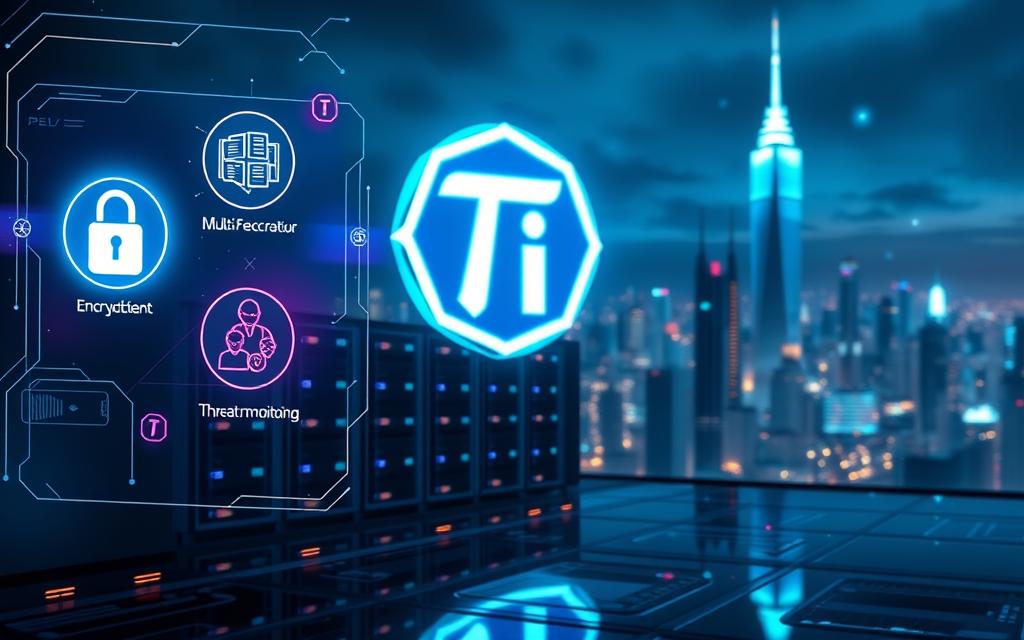
User Wallet Protection
User wallets are secured through device-level protection, with private keys stored locally on users’ smartphones using secure enclaves like Apple’s Trusted Execution Environment (TEE). The wallet system incorporates biometric authentication and multi-factor authentication to protect user funds. Users can back up their wallets using encrypted recovery phrases, ensuring that transaction signing happens locally before broadcasting.
KYC Requirements and Data Privacy
Pi Network mandates KYC verification to access Mainnet tokens, linking wallets to verified identities. While this enhances security and prevents fraud, it raises concerns about data privacy. User identity data is stored on centralized servers, which, despite promised improvements, still lacks transparency. The balance between security measures and user data protection is crucial.
| Security Feature | Description | Benefit |
|---|---|---|
| Stellar Consensus Protocol (SCP) | Consensus mechanism using Security Circles | Prevents Sybil attacks, enables mobile mining |
| Device-Level Wallet Security | Private keys stored locally with secure enclaves | Protects user funds from unauthorized access |
| KYC Verification | Linking wallets to verified identities | Enhances security, prevents fraud |
The Referral System: MLM or Growth Strategy?
Pi Network’s referral system has been a double-edged sword, driving rapid growth while raising concerns about its similarity to multi-level marketing schemes. On one hand, it has been instrumental in acquiring over 60 million users without traditional marketing expenditures. On the other hand, critics argue that it creates a pyramid-like structure that benefits early adopters at the expense of later participants.
How the Referral System Works
The referral system rewards users who invite others to join the network with increased mining rates, creating a direct incentive for existing users to recruit new participants. Users can build “Referral Teams” of invited members, with the size and activity level of these teams directly impacting the inviter’s mining rewards and earning potential. This structure has proven highly effective for growth, particularly in regions with high smartphone penetration but limited access to traditional cryptocurrency mining.

- The system works by rewarding users who invite others to join the network, increasing their mining rates.
- Users can form Referral Teams, which impact their mining rewards based on the team’s size and activity.
- This model has raised concerns about its similarity to multi-level marketing (MLM) schemes.
Comparison to Multi-Level Marketing
Critics argue that Pi Network’s referral system mirrors MLM structures, potentially disadvantaging those who join later. The tiered reward structure benefits early adopters and those who build large referral networks. However, defenders counter that unlike true MLM schemes, Pi Network doesn’t require financial investment from users, making it more akin to viral marketing than exploitative structures.
The referral system’s effectiveness in driving growth is undeniable, but its long-term sustainability remains a concern. As the network continues to expand, it is crucial to monitor its impact on the model and make adjustments as necessary to ensure fairness and equity for all participants.
Pi Network’s Community and User Base
Pi Network’s massive user community, with numbers surpassing 60 million, is both its strongest feature and a point of contention. The project’s community-driven growth has played a central role in shaping both its legitimacy and public perception.
Global Adoption Statistics
Pi Network has built one of the largest user communities in the cryptocurrency space, with official figures claiming over 60 million registered users worldwide as of early 2025. The project reports that approximately 19 million users have completed KYC verification, with over 12 million successfully migrating their mined Pi to the Mainnet.
| Region | Adoption Rate |
|---|---|
| Southeast Asia | High |
| Africa | High |
| Latin America | High |
User Feedback and Sentiment
User sentiment toward Pi Network is sharply divided. Passionate supporters praise its accessibility and potential, while critics question its long-term value proposition and business model. Positive feedback typically centers on Pi’s low barrier to entry, allowing anyone with a smartphone to participate in cryptocurrency without technical knowledge or financial investment.
“Pi Network’s mobile mining experience is user-friendly and requires minimal technical effort, making it accessible to a broad audience.”
Community Governance Features
Pi Network’s community governance features include in-app voting mechanisms, proposal submissions, and feedback channels that allow users to influence certain aspects of the project’s development. The project has also organized hackathons, developer grants, and community challenges to foster ecosystem growth and encourage user-developed applications on the platform.
Key Features:
- In-app voting mechanisms
- Proposal submissions
- Feedback channels
- Hackathons and developer grants

Pi Network Ecosystem Development
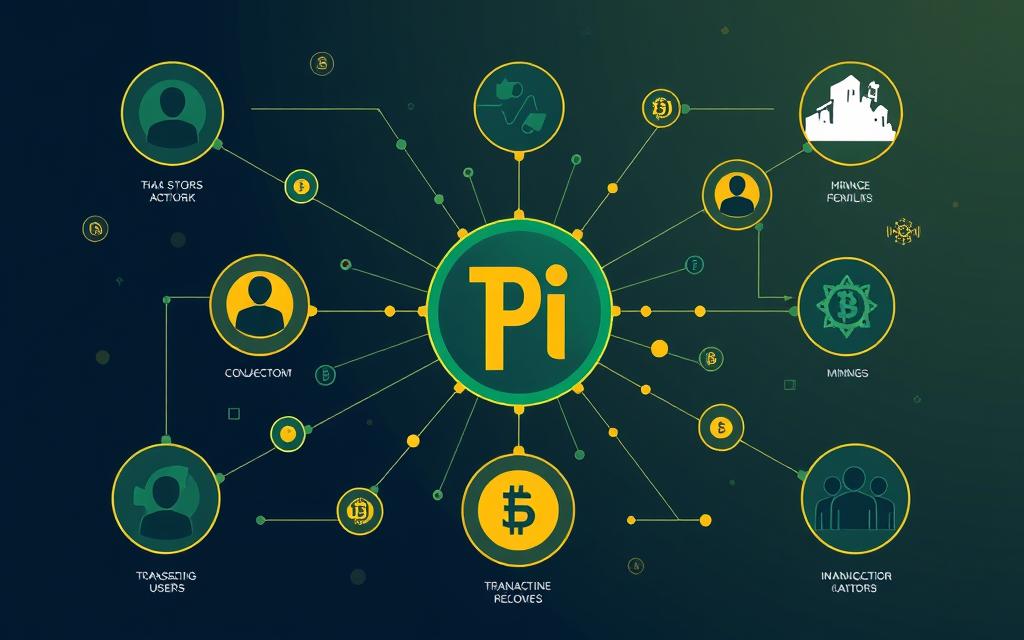
Pi Network’s ecosystem development is a crucial step towards its long-term success. The project has been gradually building its ecosystem beyond the core mining app, with the Pi Browser serving as the central platform for accessing decentralized applications (DApps) within the network.
Pi Browser and DApps
The Pi Browser functions as both a web browser and a gateway to Pi-powered applications, allowing users to interact with DApps while maintaining connection to their Pi wallets for seamless transactions. Early DApps in the ecosystem include e-commerce platforms, freelance marketplaces, and simple games, though the selection remains limited compared to more established blockchain ecosystems.
Developer Tools and SDK
Pi Network provides developers with a Software Development Kit (SDK) that facilitates the creation of applications capable of initiating Pi transactions and interacting with the blockchain. The development tools include APIs for wallet integration, transaction processing, and user authentication, though some developers have noted limitations compared to more mature blockchain development environments.
Hackathons and Community Projects
Pi Network has organized multiple hackathons to encourage application development, with winning projects receiving funding and support for further development. Community-driven projects have emerged in various categories, with particular focus on peer-to-peer marketplaces, digital content platforms, and services targeting regions with limited banking infrastructure. The success of the ecosystem ultimately depends on creating genuine utility that drives organic transaction volume rather than purely speculative activity.
The February 2025 Open Mainnet launch has accelerated ecosystem development by enabling real transactions and external connections, potentially increasing developer interest and community engagement. As the ecosystem continues to grow, it is expected that more diverse and complex apps will be developed, further enhancing the Pi Network ecosystem.
How to Buy, Sell, and Trade Pi Coin

As Pi Network’s Open Mainnet is now live, the question on everyone’s mind is how to buy, sell, and trade Pi Coin. The process involves several steps that differ from more established cryptocurrencies.
KYC Verification Process
The first and most critical step in selling Pi Coins is completing the Know Your Customer (KYC) verification. This mandatory process is handled within the official Pi Network app. Users must submit government-issued identification to verify their identity.
KYC verification can take anywhere from days to months to complete due to the large backlog of applications, creating a significant bottleneck for users looking to trade their mined Pi.
Setting Up a Pi Wallet
Once KYC verification is complete, users need to establish their Pi Wallet using the Pi Browser app. To do this, download the official Pi Browser, then navigate to the “wallet.pi” page to follow the instructions for creating a wallet.
During wallet setup, users will receive a 24-word seed phrase, which is crucial for accessing their wallet. It is essential to write down this phrase and store it safely offline, as losing it means losing access to the Pi Coins forever.
Available Exchanges for Pi Coin
With the wallet set up, the next step is to find a reputable cryptocurrency exchange that lists Pi Coin for trading. As of May 2025, notable exchanges supporting PI trading include OKX, Gate.io, and Bitget.
OKX offers various trading pairs such as PI/USDT, PI/TRY, PI/USD, PI/EUR, and PI/BRL. Gate.io supports the PI/USDT trading pair, while Bitget provides trading pairs like PI/USDT and PI/BTC.
Transferring Pi from the Pi Wallet to an exchange requires careful address verification. Transfers typically take 10-30 minutes to complete, depending on network congestion. Users can then trade their Pi Coins using market orders or limit orders.
Comparing Pi Network to Other Mobile Mining Apps
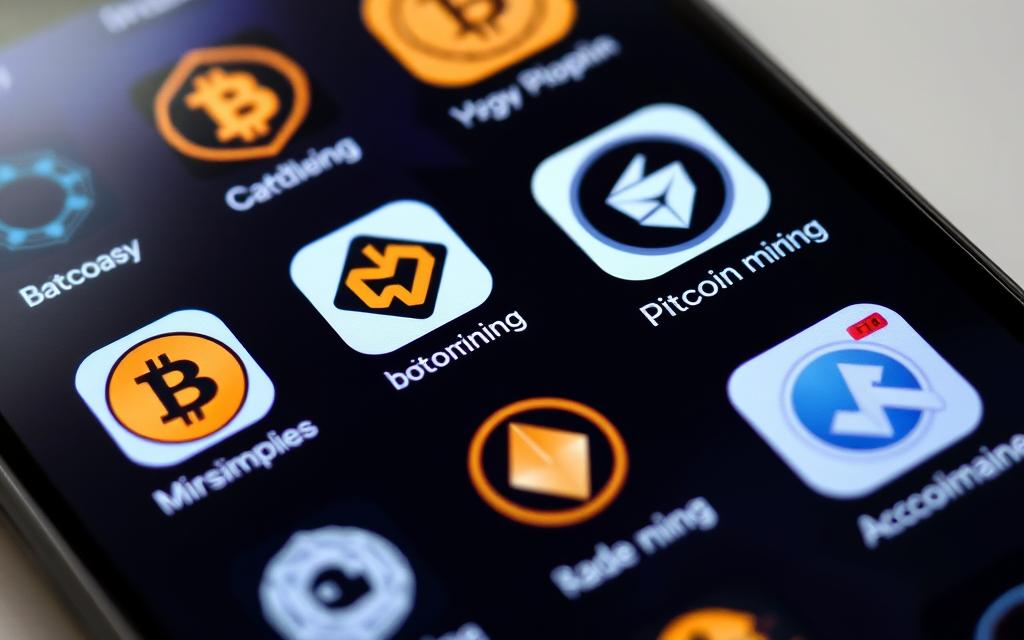
The mobile cryptocurrency mining landscape is diverse, with several apps offering unique features. Pi Network is part of this growing category, aiming to make digital asset acquisition accessible without specialized hardware. To understand Pi Network’s position in the market, it’s essential to compare it with other prominent mobile mining apps.
Pi Network vs. Electroneum
Pi Network and Electroneum (ETN) share the goal of making cryptocurrency mining accessible through mobile devices. However, they differ in their approaches. Electroneum uses a modified proof-of-responsibility consensus that is more centralized but environmentally friendly. In contrast, Pi Network’s Security Circle approach creates a different form of trust-based validation. While Pi Network offers a simpler user experience, Electroneum has an established exchange presence and real-world payment solutions in developing markets.
Pi Network vs. Bee Network
Bee Network emerged after Pi Network with a strikingly similar mobile mining concept and referral system. Many view Bee Network as a direct clone, though it has a smaller user base and less developed ecosystem. The similarities between Pi and Bee have created confusion in the market, with both projects facing similar criticisms regarding their legitimacy and long-term value proposition.
Pi Network vs. Brave Browser
Brave Browser represents a different approach to mobile cryptocurrency earning, rewarding users with Basic Attention Token (BAT) for viewing advertisements while browsing. Unlike Pi Network’s closed ecosystem approach, Brave’s BAT token has been tradable on major exchanges since its inception, providing immediate liquidity and utility for users. Brave’s model creates clear value by connecting advertisers directly with users willing to view ads.
In conclusion, while Pi Network and other mobile mining apps share the goal of making cryptocurrency accessible, they differ significantly in their approaches and features. Pi Network’s emphasis on building an entire ecosystem rather than just a token differentiates it from many competitors.
Risks and Limitations of Pi Network
Despite its innovative approach, Pi Network is not without its risks and limitations. As the project continues to evolve, several concerns have emerged that could impact its future success.
Centralization Concerns
One of the primary concerns surrounding Pi Network is its level of centralization. Despite claims of decentralization, evidence suggests that the project operates with a highly centralized structure, contradicting fundamental blockchain principles. The Pi Core Team controls all mainnet validator nodes, effectively creating a permissioned system rather than a permissionless network. This centralization raises questions about censorship resistance and creates single points of failure.
Token Distribution Issues
Token distribution is another significant issue. Reports indicate that the Pi Core Team holds a vast majority of tokens, potentially over 93 billion out of 100 billion. Such concentrated ownership fuels market manipulation fears and directly conflicts with DeFi principles. The extreme concentration of tokens in the hands of the core team could dramatically impact token price and liquidity if they decide to sell even a small percentage of their holdings.
Regulatory Uncertainties
Pi Network also faces regulatory uncertainties, particularly regarding securities laws in various jurisdictions. There’s a risk that Pi could be classified as an unregistered security, which would have significant implications for the project. Additionally, the referral-based growth model used by Pi Network could attract scrutiny from regulators concerned about pyramid or Ponzi-like structures.
| Risk Factor | Description | Potential Impact |
|---|---|---|
| Centralization | Control by Pi Core Team | Censorship, single points of failure |
| Token Distribution | Concentrated ownership | Market manipulation |
| Regulatory Issues | Unregistered security concerns | Legal and financial repercussions |

Future Outlook for Pi Network
As Pi Network enters its Open Mainnet phase, the project’s future outlook is filled with both promise and challenges. The successful transition from a mining-focused application to a full-fledged cryptocurrency ecosystem with genuine utility and sustainable value creation will be crucial for its long-term viability.
Roadmap and Upcoming Features
Pi Network’s roadmap following the February 2025 Open Mainnet launch is ambitious, focusing on expanding the DApp ecosystem, improving developer tools, and potentially securing listings on major cryptocurrency exchanges. The integration with Chainlink represents a significant technical milestone, enabling more sophisticated applications through reliable oracle services for external data. This development is expected to enhance the overall functionality of the network and attract more developers to the platform.

Potential Challenges and Opportunities
Despite the promising roadmap, Pi Network faces several challenges. Demonstrating real-world utility beyond speculative trading remains a critical challenge, requiring successful merchant adoption and compelling use cases within its ecosystem. The project must also address persistent centralization concerns by implementing a clear path toward true decentralization of network validation and governance.
Token distribution is another major hurdle, as the reported concentration of supply in the hands of the core team creates both market and trust challenges. Regulatory compliance across various jurisdictions will become increasingly important as Pi Network grows, particularly regarding securities laws and anti-money laundering requirements.
However, opportunities exist for Pi Network to leverage its massive user base in regions with limited banking infrastructure, potentially providing financial services to underserved populations. The project’s mobile-first approach positions it well for growth in emerging markets where smartphone adoption exceeds traditional banking access. Ultimately, Pi Network’s success will depend on its ability to create genuine economic value that justifies its market capitalization and fosters sustainable growth.
Conclusion: Is Pi Network Worth Your Time?
As we conclude our comprehensive review of Pi Network, it’s essential to assess whether this cryptocurrency project is worth your time and investment. After examining Pi Network from multiple angles, we can conclude that while it’s not definitively a scam in legal terms, it presents significant risks and uncertainties that potential users should carefully consider.
Pi Network has successfully created one of the largest cryptocurrency communities in the world through its accessible mobile mining approach, demonstrating remarkable user acquisition and engagement. However, the project’s future success depends on its ability to transition from growth-focused user acquisition to creating genuine utility and value within its ecosystem.
The project has delivered on key technical milestones, including its Open Mainnet launch, though much later than initially promised and with continuing centralization concerns. For users with minimal time investment who approach Pi as a “nothing to lose” opportunity, the potential upside may justify the limited effort of daily check-ins, particularly in regions with fewer economic opportunities.
However, users should be extremely cautious about investing significant time in building large referral networks or expecting substantial financial returns, as the long-term value proposition remains highly speculative. The mandatory KYC requirements and data privacy concerns represent real risks that users should weigh against potential benefits before submitting personal information.
In conclusion, while Pi Network may eventually provide some value, it’s unlikely to deliver life-changing returns for most participants. This article has aimed to provide a balanced, fact-based assessment of Pi Network’s legitimacy and potential, but ultimately, each user must conduct their own research and make decisions based on their individual risk tolerance and circumstances.
As you consider participating in Pi Network, remember that in the cryptocurrency space, if something seems too good to be true, it often is—and genuine value creation typically requires more than simply tapping a button once a day. Always do your own research and consult a financial advisor before making any investment decisions.
FAQ
What is the current status of Pi Network’s mainnet launch?
Pi Network is currently in the enclosed mainnet phase, which is expected to transition to an open mainnet launch in February 2025.
How does Pi Network’s Stellar Consensus Protocol work?
The Stellar Consensus Protocol is a consensus mechanism that enables fast and secure transactions on the Pi Network blockchain, allowing for decentralized and reliable data transmission.
What is the purpose of the KYC verification process in Pi Network?
The KYC verification process is designed to ensure the security and legitimacy of Pi Network users, preventing scams and maintaining the integrity of the ecosystem.
How can I mine Pi coins, and what are the rewards?
Pi coins can be mined through the Pi Network mobile app, with rewards based on the user’s contribution to the network, including their security circles and trust graph.
What is the current market performance of Pi Coin?
As Pi Network is still in the enclosed mainnet phase, Pi Coin is not yet widely available on major exchanges; however, the project’s growth and adoption statistics indicate a promising future.
How does Pi Network’s referral system work, and is it a multi-level marketing scheme?
The referral system is designed to incentivize users to invite new members to join the Pi Network community, with rewards for successful referrals; while it shares some similarities with multi-level marketing, its primary purpose is to drive legitimate growth.
What are the security features of Pi Network’s blockchain infrastructure?
Pi Network’s blockchain infrastructure is secured through a combination of the Stellar Consensus Protocol, security circles, and trust graph, ensuring a robust and decentralized network.
Can I buy or sell Pi Coin on major cryptocurrency exchanges?
Currently, Pi Coin is not widely available on major exchanges; however, users can expect to access Pi Coin on various exchanges once the open mainnet launch is completed.
What are the potential risks and limitations associated with Pi Network?
Some of the potential risks and limitations include centralization concerns, token distribution issues, and regulatory uncertainties, which are being addressed by the Pi Network development team.
Who are the founders of Pi Network, and what is their background?
Pi Network was founded by Dr. Nicolas Kokkalis and Dr. Chengdiao Fan, both of whom have a background in computer science and cryptocurrency, having originated from Stanford University.
